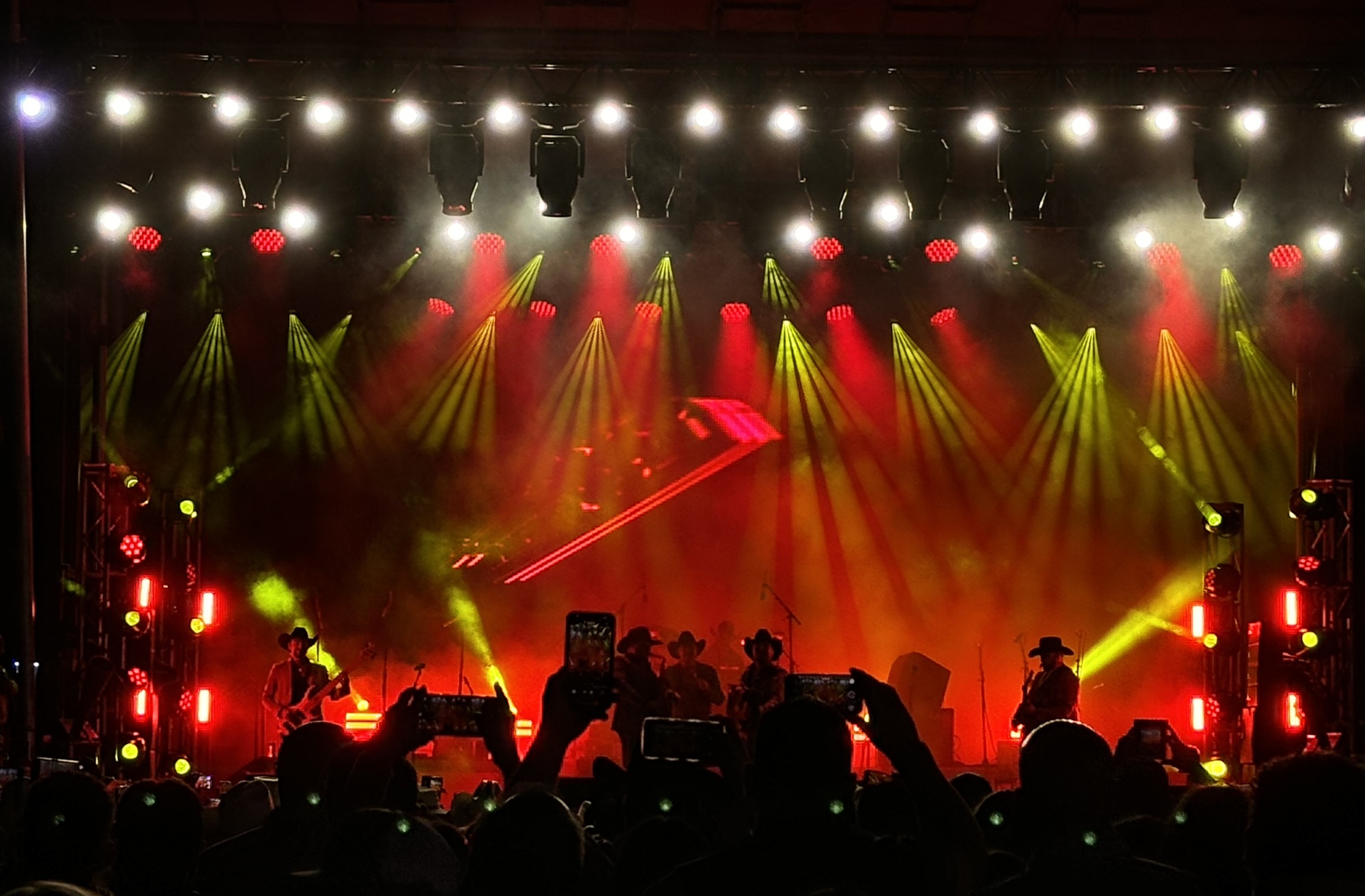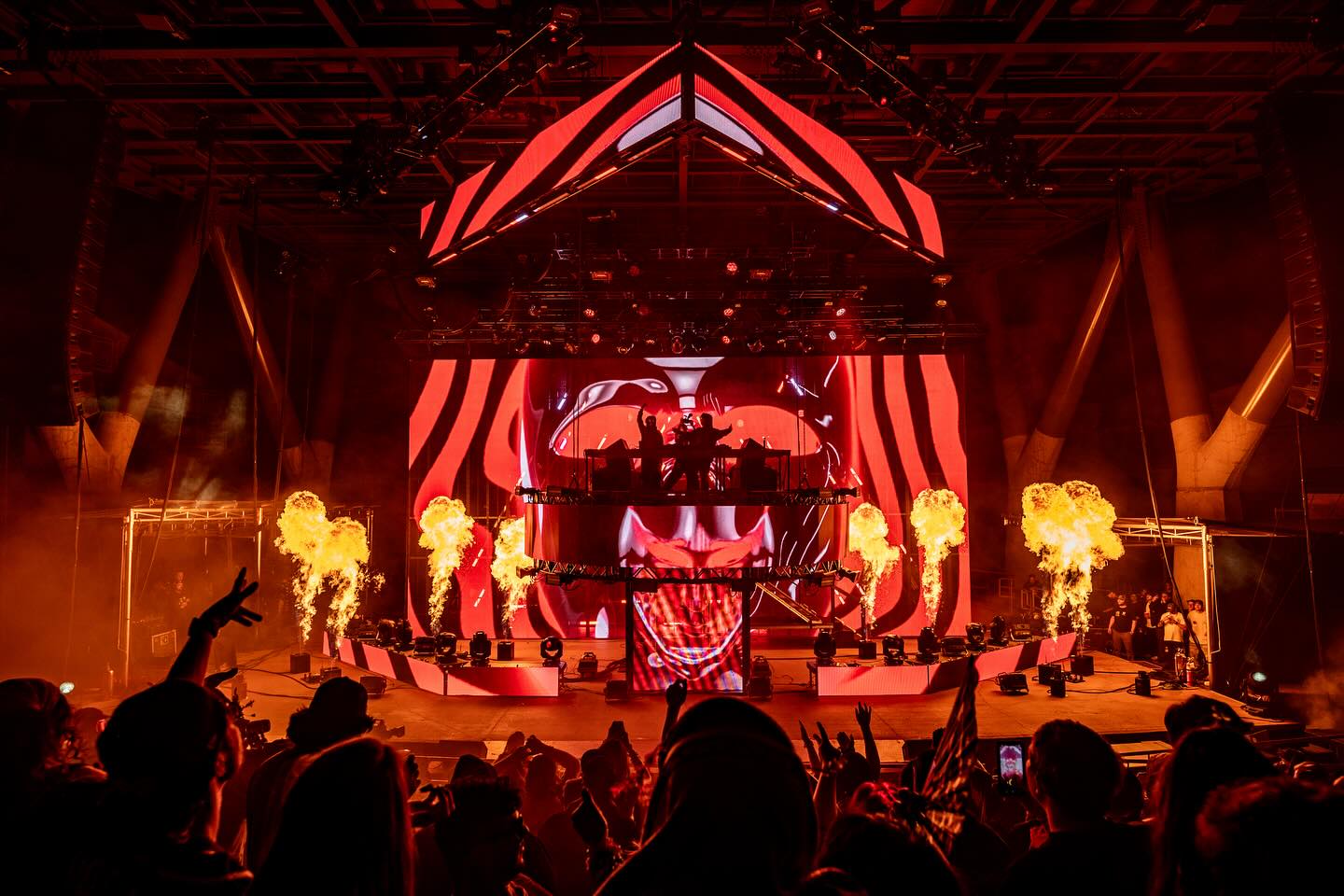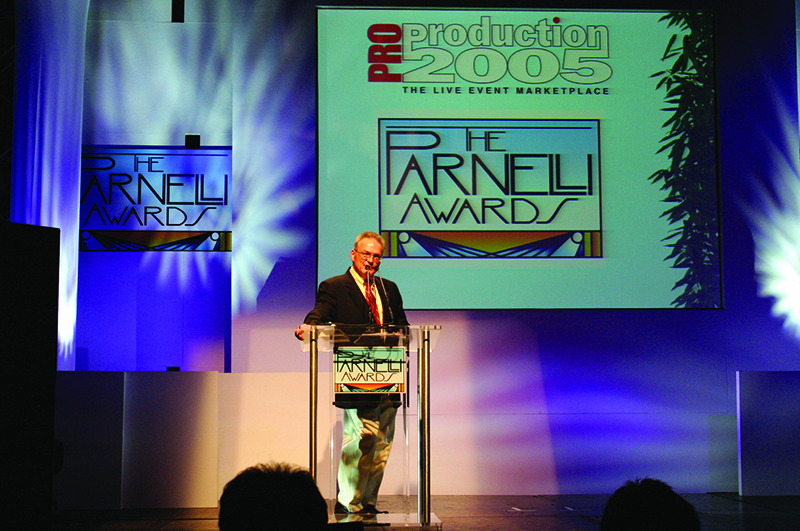
By Kevin M. Mitchell
At the 13th Annual Parnelli Awards in Las Vegas in 2013, Patrick Stansfield took the stage as he had done each time for the previous 12 shows. As always, the audience got especially quiet to listen to one of the most articulate, funny, and smart professionals to ever work in the live event profession. “I’m happy to be here tonight, my biggest night of year,” he began. “I get more pleasure from this event than anything else I’ve ever done in my life, and I hope to continue for at least another 13 years and more years after that. You guys are a credit to industry; you guys are the industry.” The following year, however, he succumbed to kidney failure on Oct. 28 — just weeks before the 14th Parnellis — but not before providing a video, with an assist from Marshall Bissett, that would be presented at one of the most emotion-filled ceremonies ever.
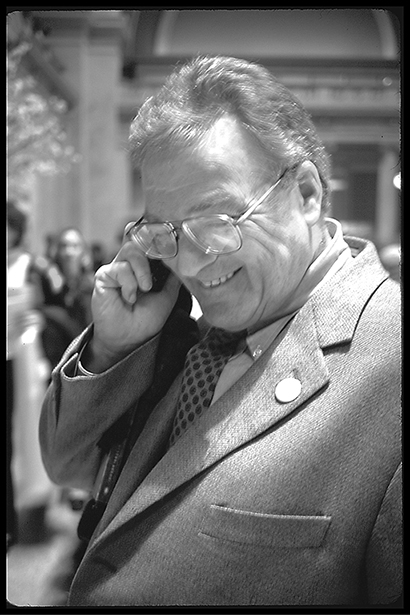
Since Stanfield’s passing, his name has often evoked from the stage, and a few years ago, we changed the name of two of the awards to The Patrick Stansfield Production Manager of the Year Award and The Patrick Stansfield Touring Manager of the Year Award. In his NAMM oral history interview, Terry Lowe tells of how the two founded the Parnelli Awards. One day Lowe went to visit his longtime friend and told him he’s starting a convention and “we have to do an award show.” At first Patrick begged off. He eventually agreed — on one condition: The awards needed to be named after Rick “Parnelli” O’Brien, a longtime protégé to Patrick and friend to many in the touring business who had recently been struck down with cancer. In that interview, Terry continued that despite his initial resistance, “he was a great inspiration, a great proponent of the show, he made the show happen.”
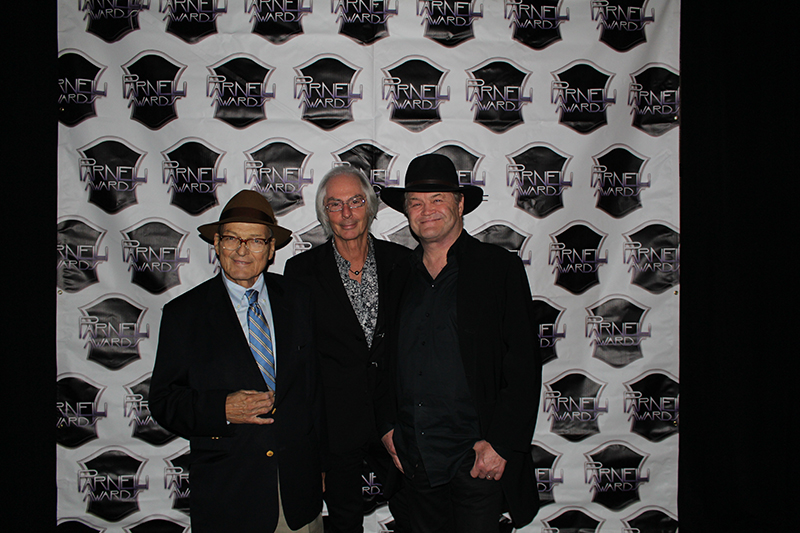
Patrick led the Parnelli Awards Board of Advisors, and his wisdom and insight was appreciated at every board meeting. Then he lent his expertise to every aspect of every Parnelli Awards show. Those of us who put the show together were in awe of his on-the-fly creative solving skills. There was no problem too big (“not enough time to load in!”) or too small (“there’s no coffee for the crew”) that he wouldn’t get involved with and find a solution to. Bigger than that was his sense of humanity. He was always sensitive to someone’s feelings, and always went out of his way to make everyone who came to the Parnelli Awards feel welcome. His belief in the importance of the Parnelli Awards was as inspiring as it was infectious. His sense of humor was always prevalent, too. On one of the later shows, the producer handed Patrick his “script.” Patrick looked at the slightly ink-stained piece of paper carefully, and then flipped it over to see the back was blank. Anticipating what he was thinking, the producer told him that there was a real effort to keep the show from going long and all scripts needed to be really short. “Oh my boy,” he said with a half hug. “You know I’m going to say more than this!”
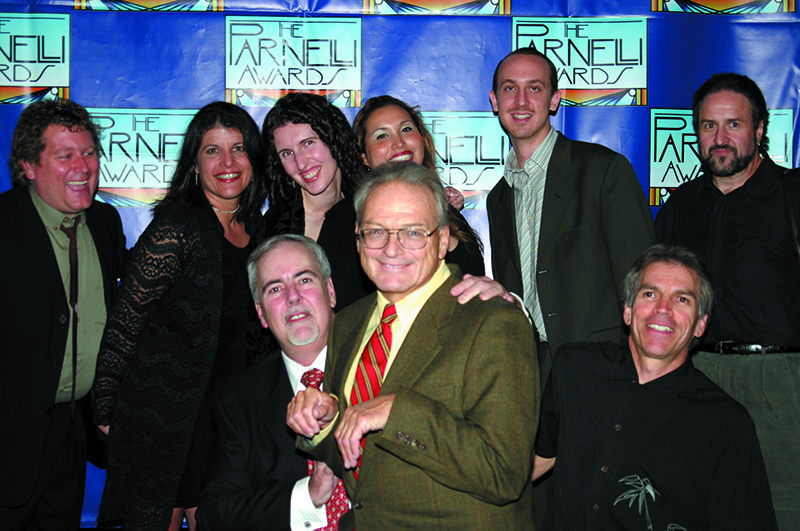
At that first show without Patrick, Terry said, “This year we’re celebrating the 14th annual Parnelli Awards. This is a fact I am very proud of, and I am sure Parnelli Awards co-founder, Patrick Stansfield, is looking down at us from his production office in the sky, smiling as well.” Marshall Bissett assumed the role of Chairman (since Patrick could never be “replaced.”) “When Terry first proposed me to lead this loud, outspoken and unruly group of opinionated industry leaders, my first reaction was to run in the other direction,” Bissett quipped. “Later, in therapy, I was convinced it would be character building. Now I am looking forward to carrying on the work started by Patrick Stansfield and the Board. The Parnelli awards have become a great tradition, and I am proud to be involved.”
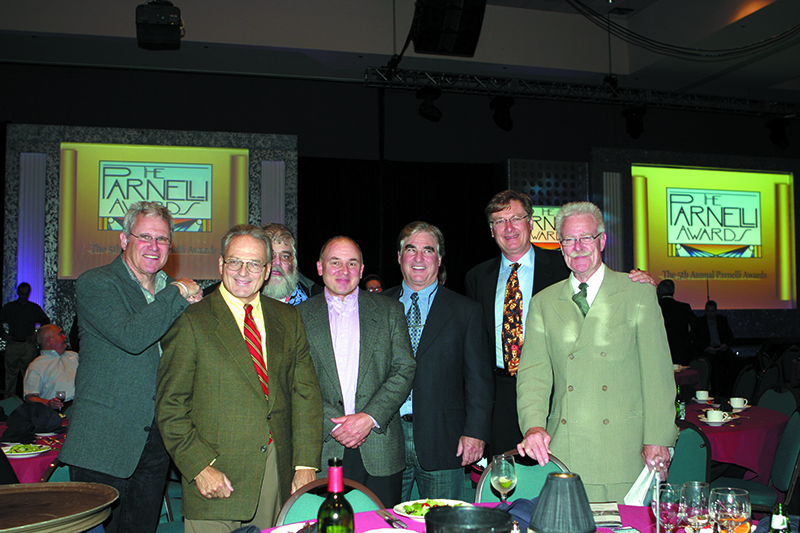
Last year, at the 19th annual show, Tim Rozner received the Patrick Stansfield Production Manager of the Year award and said, “I couldn’t be more proud that my name is on this plaque with Patrick Stansfield.” Not a year goes by without his name being mentioned in a similar fashion. For his obituary, Bissett summed it up well: “Patrick was the best friend, mentor, and storyteller you could wish for. His love for the concert industry was consuming and infectious, and he fought hard to give his acts the best shows possible. He is irreplaceable, but his legacy will be safe in the hands of the new generation he trained.”
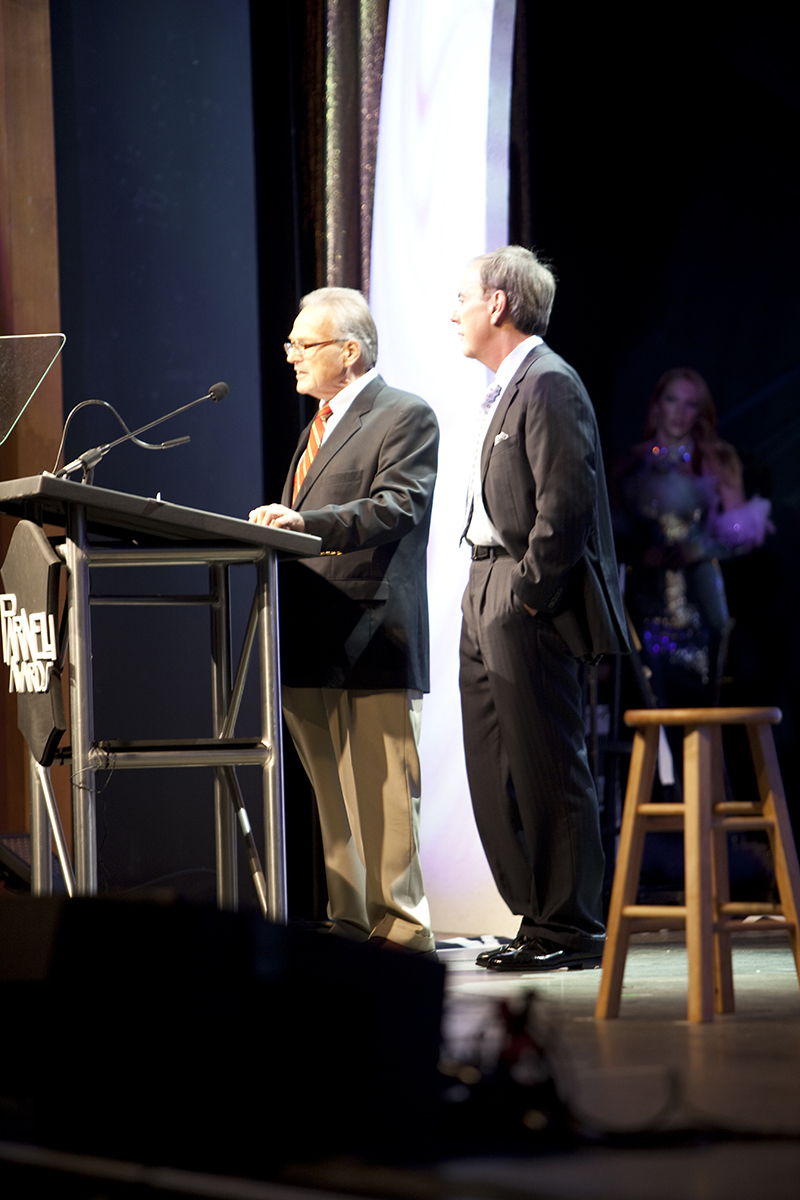
The Life of Patrick Stansfield
Patrick Stansfield was one of the founders of this industry, making and breaking rules long before the suits and bean counters got involved, and his work with Barbra Streisand, Neil Diamond, Bob Dylan, George Harrison, Grateful Dead, Santana, Tina Turner, and Neil Young, among scores of others, and orchestrating special events like the Pope’s visit to Yankee stadium in 2008, has yielded tales to be retold many times over by those who worked with him over the years.
Born in Cleveland, Ohio, in 1943, Stansfield never got to know his biological father, Dick Dickey. The Marine was killed in one of the last battles of the war at Okinawa at the age of 23. His mother, Janeann, and her family raised Stansfield, until his mother met and married James Stansfield, who adopted him. When a childhood friend got Stansfield backstage for a series of New York Metropolitan Operas, the die was cast. “There I was, at 13, standing backstage watching five or six nights of opera from the fly rail,” he said, in a 2005 PLSN/FOH interview. “I was seeing how it all works.”
In 1959, he became an apprentice at MusiCarnival and worked there until 1961, when he went first to Ohio University in Athens, OH, and then transferred to Carnegie Mellon in Pittsburgh, PA. He would be forced to drop out in 1964, and then started stage-managing Equity productions. In 1969, he would work with the Guthrie Theater in Minneapolis, MN, named after English TD Tyrone Guthrie, where music and rock shows were put on at the Walker Art Center, also in Minneapolis, including the Grateful Dead and the first U.S. tours of John Denver, Cat Stevens and Elton John.
“I consciously decided around then that theater was not where my future was,” Stansfield said. “I really didn’t think it was a growth industry at the time, so I followed the money, the production money.” And so he did, ending up in San Francisco, where he brazenly knocked on Bill Graham’s door. Graham wanted to provide complete services to large tours. “The challenge was, we had to invent it all,” Stansfield said. Groups like the Dead and Santana had their own sound companies, but then all the other services from arranging hotel bookings and transportation came into play.
In 1971, Stansfield went out with Santana as production manager, and they would play everything from “dirt poor agricultural halls, civic auditoriums to 7,000 to 8,000, and then suddenly you’re in Chicago trying to amplify the stockyards for 12,000.” In 1972, he got on the Rolling Stones’ infamous “STP” tour, acting as stage manager at first for just a few dates, then aggressively went after the position for the rest of North American tour. In 1974, he was production manager for the first real stadium mega-tour for Crosby, Still, Nash & Young. That was a historical high point for the industry, because it grossed $25 million in 23 venues. If there was any doubt that rock ‘n’ roll had matured and was ready to make a tremendous amount of money, it was dispelled then.
In 1980, Stansfield was at the top of his game, in a position to mostly limit his touring clientele to one: Neil Diamond. He had started working with Diamond in 1975, and he’d eventually be put on permanent retainer, a relationship that lasted close to 25 years and spanned more than 1,000 shows before ending abruptly. Stansfield always regretted, sometimes understandably angrily, being “put off that bus.” (Like the professional he always was, he never spoke in detail of that breakup). Diamond would film a special video in his honor when he received the Parnelli Lifetime Achievement Award in 2005, which Stansfield graciously and humbly received.
Then came 1985 and Live Aid, which Stansfield refers to as “the day the music industry grew up.” The historic worldwide telecast, for which he served as stage coordinator at the Philadelphia location, brought together scores of acts for the first billion-plus audience. It also brought together two old friends. In 1993/94, Stansfield served as tour manager production supervisor for Barbra Streisand’s “In Concert” tour with Marvin Hamlisch. “Barbra, as I am fond of saying, is like a 747—she takes a full crew.”
Stansfield started working decidedly non-rock ‘n’ roll gigs, like Pope John Paul II’s visits to Central Park in New York (1995) and Dodgers Stadium in Los Angeles (1987). It was an emotional moment when he got to take his stepfather, a lifelong Catholic, to the event, where they met the Pope. In 1995, Stansfield also started doing events for Nissan, thus blazing into a successful corporate career. Again, he insists it’s all the same: “Same skills, just different head space in terms of corporate protocol and the decision making process.”
In addition to another Papal visit in 2008, which required the transformation of Yankee Stadium into a weatherproof outdoor cathedral of sorts in a scant 49-hour window for Pope Benedict XVI, Stansfield kept busy on many auto industry-related events for PRG and other extravaganzas including the touring Star Wars in Concert production of 2012 that paired live symphonic and choral performances with HD footage from the movies. He also increasingly put his heart and soul into the Parnelli Awards. (He received the Lifetime Achievement honor himself in 2005). His presence at all the meetings was critical, as was the way he stayed on the floor during the galas themselves, quick to iron out any wrinkle. Fourteen years strong, and continuing to grow, it will be one of his lasting legacies.
“Patrick was a dear friend of mine for over 30 years,” says PLSN/FOH publisher Terry Lowe, after Stanfield’s death in 2014. “He was a great mentor to me. He touched the lives of so many people in a positive way. A part of our history passed away with him for he helped shape the history of our industry. Patrick may have passed out of this world but he will always be in the hearts and minds of the people who knew and loved him.”
